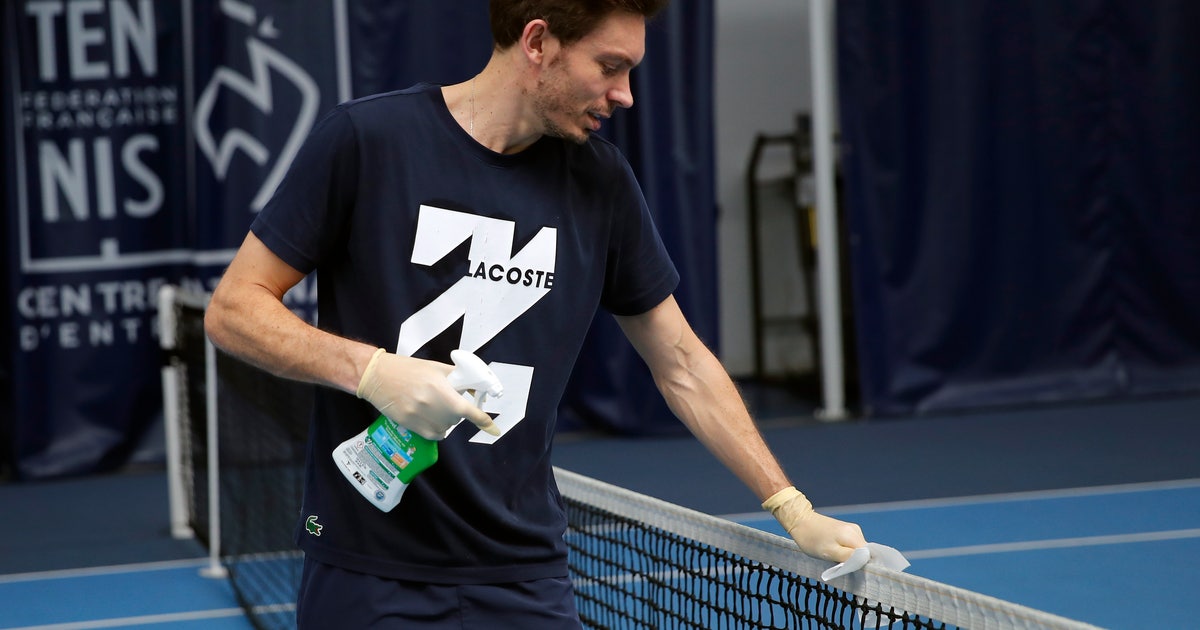Tough going for French tennis players returning to training


PARIS (AP) — Nicolas Mahut once spent three days on court in the longest match in tennis history, yet even light training for one hour proved challenging for him on Wednesday.
That’s because he was returning to practice following many weeks of staying at home amid the coronavirus pandemic. The lockdown that started on March 17 in France ended Monday, releasing Mahut and other professionals gingerly back onto court.
Mahut traded shots of varying speed and accuracy with practice partner Grégoire Barrère.
“It feels good to play tennis again. Everyone had missed it; the players, the coaches,” Mahut said after the session, held at a training center near the grounds of the French Open at Roland Garros.
“The big risk is to get injured,” Mahut said. “We played leisurely for one hour and there are already a few pains.”
For Mahut and many other athletes, this has been a layoff unlike any other.
“What’s different is that this isn’t even like an injury. Everyone’s had an injury, and been away from the circuit for five, six months. But this was a different feeling,” he said. “We weren’t on holiday — far from it for all the people who were confined — and we weren’t injured. It was a really complex situation to deal with.”
What also felt strange was the many new obligatory measures aimed at preventing the spread of COVID-19 — such at not sitting down on a chair, using different balls than your opponent, and sliding on gloves to wipe down the net cord with disinfectant after the session.
“Hopefully we can quickly have some normal training conditions again,” Mahut said. “But you have to respect the rules … We’re already lucky enough to be back playing.”
The 38-year-old Mahut won majors as a doubles player, but is probably best known for agonizingly losing to John Isner 70-68 in the fifth set at Wimbledon in 2010, the longest match in history.
They played for 11 hours, 5 minutes in a match featuring 168 consecutive holds of serve and a combined 216 aces.
But even getting one ace against Barrère was a struggle.
“You don’t lose the feeling with the racket, or very little,” Mahut said. “What’s really hard is serving, your feet are heavy. We’ll need to wait a while before reaching the highest level again.”
He hopes that will be at Roland Garros, a few hundred meters away in western Paris. The clay-court tournament was meant to start on May 24, then got postponed to Sept. 20 because of the virus.
“My optimistic side tells me that we will play at Roland Garros,” Mahut said. “But my more realistic side tells me it could be a very complicated season (with) no play at all.”
There have been myriad opinions as to when tennis can resume, even without fans.
“What’s for sure is that we can’t start playing again if there’s a risk of contamination,” Mahut said. “Is playing without fans an option? I really don’t know. I don’t think it’s the right time to get into a debate over who is right and wrong.”
Wearing a blue face mask, Dr. Bernard Montalvan supervised Mahut and Barrère.
He is helping ease French tennis players back into training, with Mahut and Barrère expected to be tested shortly for the virus.
But Montalvan thinks tennis may have to wait for a vaccine before fully returning to normal.
“I can’t say when the vaccine will be ready, probably not for a long time,” he said. “We’ll see what the directives are, but I imagine professional tennis will resume before a vaccine is validated.”








